
Stirling engine
Ce site appartient au réseau de sites relatifs aux moteurs à air chaud
There are other types of Stirling engines than those studied in the specific pages of this site. By taking the standard Gamma engine for reference, the principal models worthy of interest are the following:
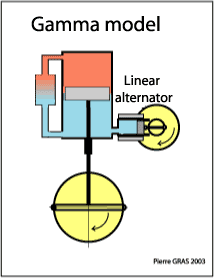
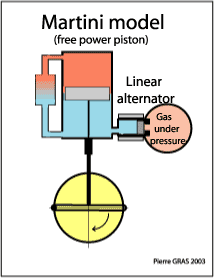


The operating piston moves according to the pressure of the engine. When the pressure increases, it is pushed in one direction. When the pressure decreases, it returns in the other direction to its initial position. This requires the presence of an average force on the “outside” face of the piston, it is generated by a gas enclosed in a chamber or by the relief of a spring. If the piston engine is a magnet, one can install a linear alternator for generating electric current. (See above)
In contrast to the previous one, the piston is mechanically driven. The displacer moves according to the pressure of a gas enclosed in a capacity and the pressure of the engine (See above).
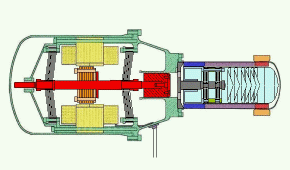
This engine combines the advantages of the previous models.The great advantage is that one can obtain an absolute sealing because there does not exist any mechanical connection with outside. Produced energy is evacuated by a completely tight linear alternator (See drawing above and the animation of NASA).
The principle consists in putting several alpha engines in “series”. There is only one piston by cylinder which has the function of displacer and the function of operating piston. The phase angle difference between each piston is 90°.
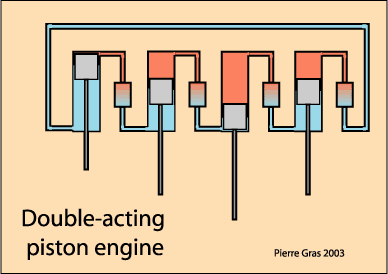
In a first approch, this engine is like a Wankel rotary engine or a pallet compressor. It is a “square” which moves in an ellipse. The gas is confined between these two elements and sees the four phases of the Stirling cycle. Here is a very simplified representation and an animation.
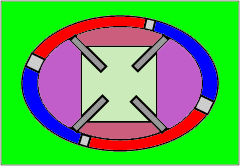
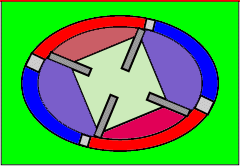
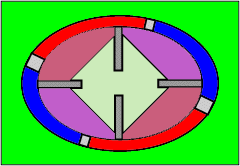
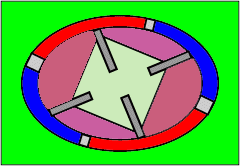
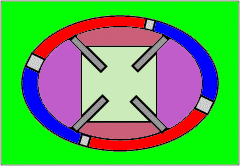
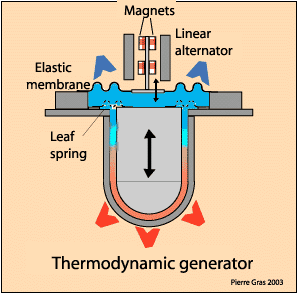
The ancestor of the free piston Stirling engine ?
The displacer oscillates with the pressure variations, it is supported by springs.
The operating piston is an elastic membrane actuating a magnet what makes it possible to generate
an electric current by a linear alternator.

Based on the cycle of Stirling, this device makes it possible to carry water. Except valves,
there is no mechanical moving piece !
This site was created and is maintained by Pierre Gras.
Thank you with all the people who contributed their shares: articles, photographs, vidéos, worksheets…
The author is opened with any suggestion allowing to improve this site for happiness of everybody. Finally, a big
thank you to Robert Stirling !
"stirlinengine.fr" site by Pierre Gras is licensed under a
Creative Commons License
 .
.
This site meets XHTML and CSS standards. To get the best, use a browser such as Firefox, Chrome, Safari, Opera... they also adhere to these standards.